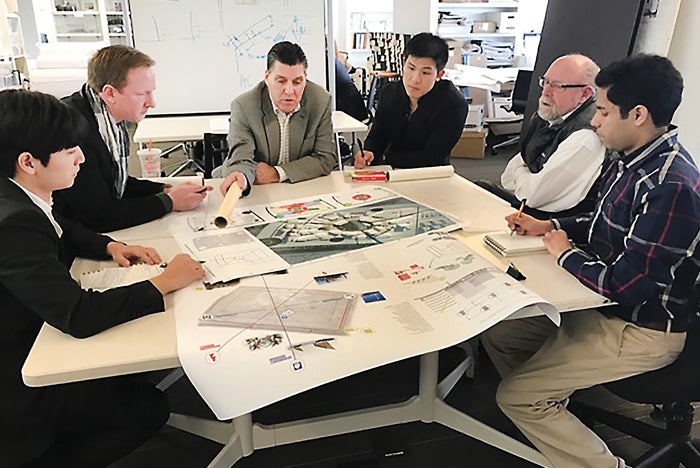Student project informs future rural hospital design

Woven Into the Fabric: Student prototypes of critical access hospitals that are integrated into main streets of rural communities.
Images courtesy of the University of Kansas architecture department
Eighteen students in the Health + Wellness master of architecture program at the University of Kansas, in collaboration with architecture firm HDR, Omaha, created a model for a critical access hospital (CAH) using a small town in the western Great Plains as a case study.
The 25-bed CAH has served the community since the 1940s, and its current facility was constructed in 1965. The project explores the relocation of the hospital to the heart of the downtown area, and the goal of the project is to design a facility that provides not just health care, but also attracts people living in the surrounding communities to other commercial and educational services. The hospital is the largest single employer in this community of 950 people, accounting for 16 percent of total employment, and represents a significant generator of economic activity.
In addition to this one case-study town, approximately a dozen towns with CAHs and populations of less than 2,500 throughout the Plains states were analyzed to find commonalities in the economic, demographic, environmental and cultural lives of these communities.
Throughout the project, the students were attempting to create not only multiple design solutions for a single small town, but also prototype proposals that could be applied to a multitude of rural communities.
The students’ analyses of these communities confirmed a general pattern of health care facilities found throughout rural America. In comparison to residents served by urban health care systems, the rural population is older and less likely to be insured, more prone to chronic medical conditions, more dependent on CAHs for long-term and skilled nursing services, and more reliant on primary and outpatient diagnostic and treatment services because of remote locations from teaching or tertiary care facilities.
The students produced three schemes that outlined both CAH building solutions and strategies for integrating the health care system into the fabric of the town. These solutions were presented to the community, and one scheme was developed to a level that provided the local decision-makers with tangible ideas to carry forward in the future.
In subsequent years, the University of Kansas Health + Wellness program worked with a number of rural health care systems to produce environmental solutions to their own CAH facilities and sponsored a national symposium in 2016 that brought together designers, health care providers and policymakers to discuss and clarify the issues related to improving access to health care in rural America.


